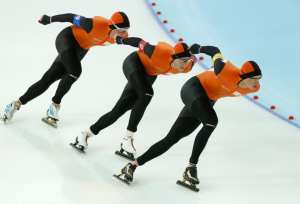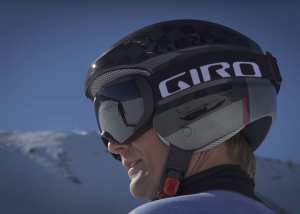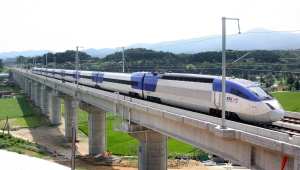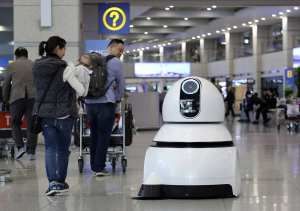
The 2018 Winter Olympics are the pinnacle of the sporting calendar for athletes around the world, but they’re also a great place to spot some of the hottest new technologies out there. Whether it’s cutting edge equipment designed to give athletes that slither of an advantage that divides gold from silver, or innovations helping spectators both at home and on site, Pyeongchang has some very cool tech on display.
Going for Gold
As it’s the Olympics, it seems fitting to begin with the tech that is designed to give the athletes an edge. Here are just a few of the fascinating innovations helping athletes go for gold.
Samsung Smart Suit
 In the Netherlands, speed skating is a way of life, and the country usually dominates the medal tables. It’s no surprise therefore that they also lead the way in terms of technology. Dutch speed skaters have been using a Smart Suit developed by Samsung to provide coaches with live body position data. This data can then be analyzed via a smartphone app to suggest improvements, with coaches even able to relay feedback live to the athlete using a connected wristband. Suffice to say, the suit is only legal in training environments, but it’s still pretty impressive.
In the Netherlands, speed skating is a way of life, and the country usually dominates the medal tables. It’s no surprise therefore that they also lead the way in terms of technology. Dutch speed skaters have been using a Smart Suit developed by Samsung to provide coaches with live body position data. This data can then be analyzed via a smartphone app to suggest improvements, with coaches even able to relay feedback live to the athlete using a connected wristband. Suffice to say, the suit is only legal in training environments, but it’s still pretty impressive.
Giro Avance Smart Helmets
 Crashes are a fundamental part of winter sports, and they’re never more spectacular (or dangerous) than in downhill skiing. With athletes reaching speeds of 90mph, the risk of injury is huge. The Giro Avance is the latest in multi-directional impact protection (MIPS) technology and is being used by American skiers in Pyeongchang. The helmets feature special tech to reduce rotational movement during impact.
Crashes are a fundamental part of winter sports, and they’re never more spectacular (or dangerous) than in downhill skiing. With athletes reaching speeds of 90mph, the risk of injury is huge. The Giro Avance is the latest in multi-directional impact protection (MIPS) technology and is being used by American skiers in Pyeongchang. The helmets feature special tech to reduce rotational movement during impact.
Athlete Airbags
 Airbag technology is commonly used in motorbike racing to lessen the impact when riders fall off their bikes. Dainese airbags have been a common sight in Pyeongchang as they’ve crossed over into winter sports. The garments are worn like vests, and feature several sensors that detect when the athlete is losing control and about to crash. These airbag vests are keeping athletes like Lindsey Vonn safe on the slopes.
Airbag technology is commonly used in motorbike racing to lessen the impact when riders fall off their bikes. Dainese airbags have been a common sight in Pyeongchang as they’ve crossed over into winter sports. The garments are worn like vests, and feature several sensors that detect when the athlete is losing control and about to crash. These airbag vests are keeping athletes like Lindsey Vonn safe on the slopes.
Smart Glasses
When you’re traveling at high speed, the ability to make snap decisions is crucial, so it’s no surprise that eyesight is such a vital component of success in winter sports. American skiers have been improving their eyesight with the help of strobe glasses that strengthen their non-dominant eye. The theory is that turns toward the non-dominant eye can be slower, so the glasses, which are made by Vima, train the athletes to overcome any weaknesses.
Smart Figure Skates
Figure skating is such an artistic sport, you might be forgiven for thinking it immune to technological advances. But the University of Delaware’s Jim Richards, who has been training American olympic figure skaters, would prove you wrong. Pairing on-body motion sensors with 10 high-speed cameras, he was able to render every movement of the skater in 3D. These models can then be tweaked to allow coaches to test different techniques virtually before the athletes try them on the ice.
Frictionless Viewing
Of course, athletes aren’t the only ones benefiting from new technologies in Pyeongchang. Here are a few innovations that are benefitting the watching public.
Bullet Train
 Asia is renowned for its incredible public transportation networks, and the South Koreans did not disappoint for this gathering of nations. The multi-billion dollar Korea Train Express (KTX) service from Seoul to Pyeongchang opened in November. The line, built by Hyundai, traffics passengers at an incredible 300kph.
Asia is renowned for its incredible public transportation networks, and the South Koreans did not disappoint for this gathering of nations. The multi-billion dollar Korea Train Express (KTX) service from Seoul to Pyeongchang opened in November. The line, built by Hyundai, traffics passengers at an incredible 300kph.
Immersive Footage
All of the footage from the 2018 Winter Olympics will be broadcast in Ultra-High Definition (UHD). UHD has a resolution four times higher than standard HD content. The Games also pioneered the use of virtual reality cameras to provide viewers with a uniquely immersive experience. Broadcasters debuted ‘ghost skier’ technology that allows viewers to easily compare the live run with a previous one in real time.
Super Fast Connections
This kind of coverage is possible due to the groundbreaking connection speeds at the Games. Footage will be broadcast on the world’s first 5G network, which offers speeds up to 1,000 times faster than legacy networks. A number of locally based startups are using the games as a test bed for the new technology.
Artificial Support
 South Korea is using the Olympics to showcase a range of autonomous technologies to help spectators, athletes and officials find their way around. For instance, 85 robots will be positioned across the event’s venues to help visitors. Another bunch of robots will be stationed at Incheon Airport to provide support to visitors. These robots will be equipped with AI-driven voice recognition software to provide instant translation of Korean into 29 languages.
South Korea is using the Olympics to showcase a range of autonomous technologies to help spectators, athletes and officials find their way around. For instance, 85 robots will be positioned across the event’s venues to help visitors. Another bunch of robots will be stationed at Incheon Airport to provide support to visitors. These robots will be equipped with AI-driven voice recognition software to provide instant translation of Korean into 29 languages.
Autonomous Transport
 Automation will also be present in transportation between the Olympic venues. A fleet of 5G-equipped driverless buses will be provided to ferry spectators between the Olympic venues. Autonomous drones are also being used to provide a host of services, including security and event footage.
Automation will also be present in transportation between the Olympic venues. A fleet of 5G-equipped driverless buses will be provided to ferry spectators between the Olympic venues. Autonomous drones are also being used to provide a host of services, including security and event footage.
The Olympic Games have a bad reputation for failing to deliver an economic legacy to the host city, but Pyeongchang is highlighting how the event can be used to provide a global showcase of the best and brightest new technologies.